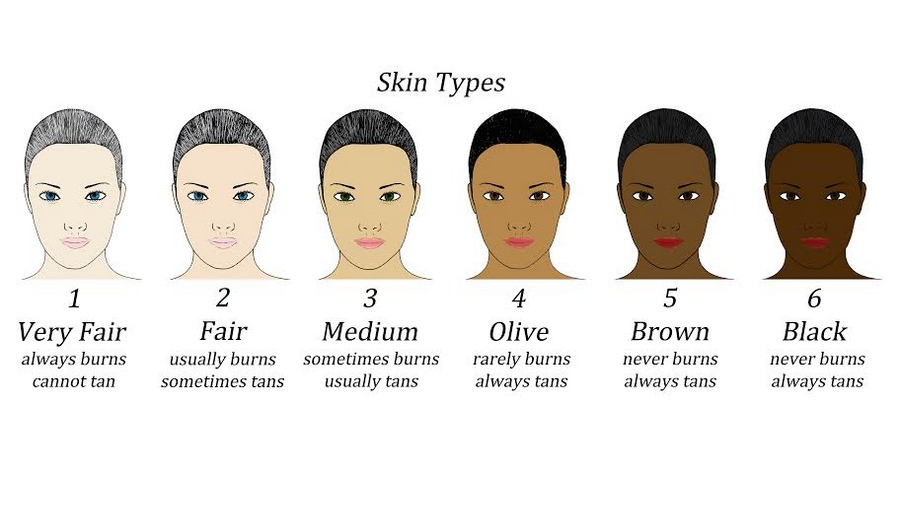
How often have you exposed the area you want to treat to the sun?Īdd up your points to see where you fall on the Fitzpatrick scale. How recently have you exposed your body to sun (or a tanning bed or self-tanner), without high-SPF sunscreen?
#Fitzpatrick skin type skin#
What happens when your skin is exposed to the sun for too long?ĭoes it tan or get darker within several hours of sun exposure? What color is your skin in areas that haven’t been exposed to sun?ĭo you have freckles on unexposed areas of skin? Karen Kagha says that there’s currently a push in the field to expand the scale to more accurately reflect the vast variety of skin tones dermatologists treat in practice today.įitzpatrick skin types are usually represented in Roman numerals from I to VI, with I being the fairest and VI the darkest, though many doctors on RealSelf also use numbers 1 to 6.


While the Fitzpatrick skin typing system is still the most widely used in dermatology, Harvard dermatologist Dr.
#Fitzpatrick skin type how to#
A dermatologist or plastic surgeon with extensive experience treating brown skin will understand and know how to avoid these risks. It’s especially critical for people with Fitzpatrick skin types V and VI, who are at higher risk of postinflammatory hyperpigmentation and even scarring from laser treatments or deep chemical peels. Knowing your Fitzpatrick skin type can help when you’re considering cosmetic treatments, especially laser hair removal, laser resurfacing, and chemical peels (commonly used to treat sun damage). They’re also at a lower risk of skin cancer due to sun exposure (though skin cancer is still a concern). That’s why people with more melanin in their skin usually tan or get darker rather than burn. However, they still need a minimum SPF of 15 for sun protection. People with dark skin tend to have more active melanocytes, cells that produce melanin, and dark skin absorbs much less UV light than pale skin-up to 70% less, according to The New York Times. Type 5s on the Fitzpatrick scale have darker brown skin and skin tans typically rather than burns. Melanin, the pigment that gives skin its color, also determines how deeply it tans in response to the sun’s UV rays. skin color (before sun exposure): ivory eye color: light blue, light gray, or light green Fitzpatrick skin type 2. Where you fall on the scale depends on your eye, hair, and skin color as well as the way your skin reacts to sun exposure. It also helps predict people’s risk of skin cancer from sun exposure. Now it’s widely used by dermatologists and plastic surgeons to predict the response of different skin tones to certain cosmetic procedures, like lasers and chemical peels.

Fitzpatrick’s intent in devising the scale was to anticipate patients’ propensity to burn when receiving phototherapy treatments. Fitzpatrick, a dermatologist at Harvard Medical School, the scale originally included skin types I–IV types V and VI were added in 1988.ĭr. The Fitzpatrick scale (aka the Fitzpatrick skin phototype scale) is commonly used to describe a person’s skin type and tone, particularly in terms of how it responds to light.


 0 kommentar(er)
0 kommentar(er)
